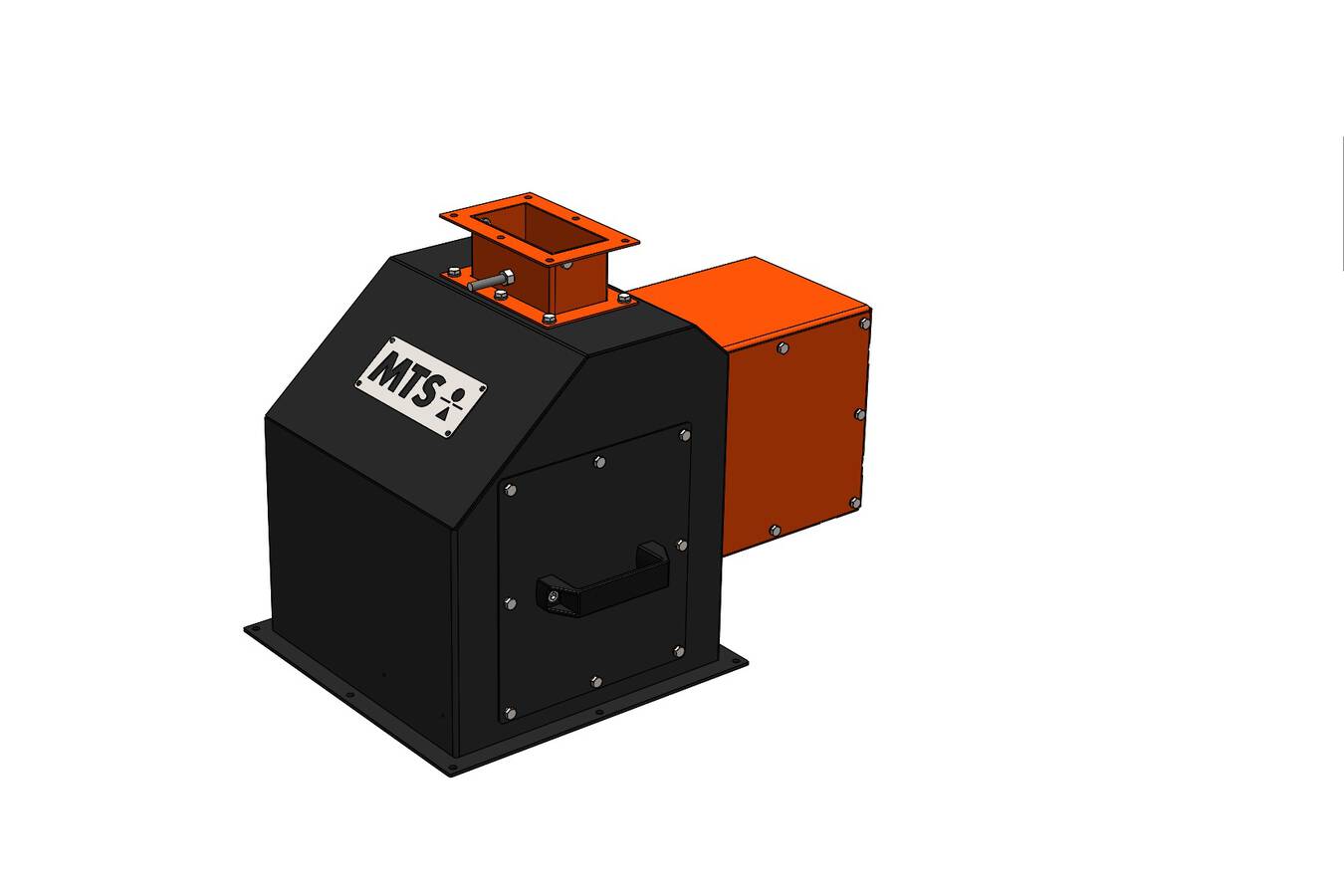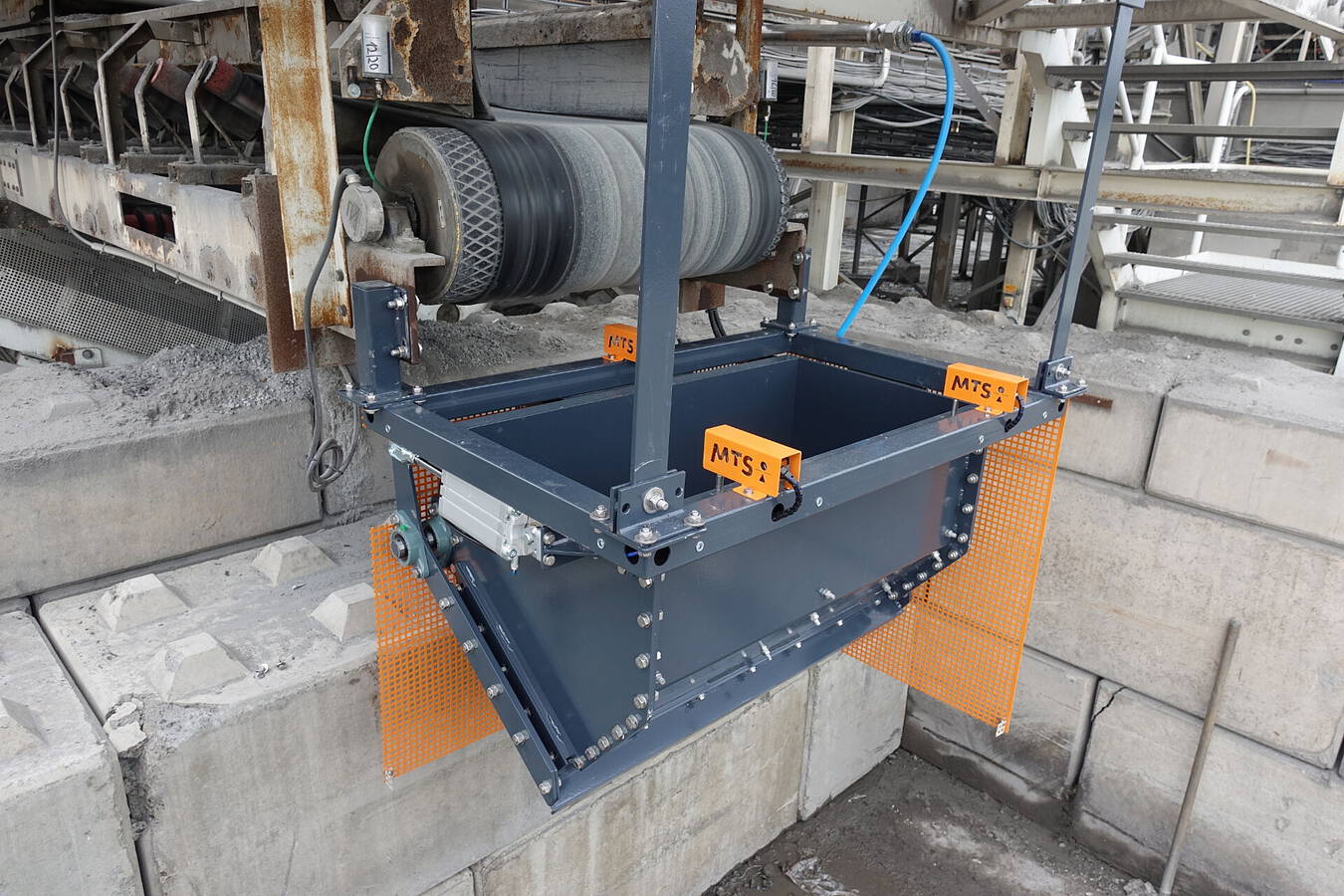Load cells for quantity measurement in glass processing
Weighing technology of MTS MessTechnik Sauerland GmbH ensures continuous supply of glass for the downstream processing plant
Load cells for quantity measurement in glass processing
Glass can be recycled an unlimited number of times - without any loss of quality. Hardly any other raw material can do this. The recycling cycle consists of the following steps: collecting glass, transporting it, processing it, melting it down and forming it into new glass products.
The reprocessing process itself is very complex. In order not to lose sight of the effort required for reprocessing, it is essential to record the mass flows in the reprocessing process.
With this in mind, the family-run recycling company Reiling Glas Recycling GmbH & Co. KG from Marienfeld turned to MTS MessTechnik Sauerland GmbH. The task was to record the input quantity of ”hollow glass” in the charging bunker in order to ensure a continuous supply of material for the downstream processing plant. And this, if possible, without any additional effort in the process sequence.
Weighing technology from the high-load range
The solution was to weigh the existing feed hopper, which stood on a separate support structure and was filled by wheel loader. Two points were in the foreground when selecting the weighing technology:
Firstly, ”jostling” of the wheel loader at the bunker could not be completely ruled out. Secondly, the dimensions and weight of the bunker required technology from the high-load range: 4 x 4 m in plan, 2.20 m high, an empty weight of 5 t and a capacity of approx. 25 t demand extreme robustness from the weighing technology and also insensitivity to transverse and lateral forces.
For this application, the 30870 double bending beam load cell with a nominal load of 10 t was the obvious choice. Originally, this load cell was developed for use in long timber transporters and trucks for weighing freight weights. Therefore, this load cell features a very robust design and is mounted backlash-free between the support and the substructure. Another special feature: the connection cable is equipped with a four-pole plug and can thus be easily and flexibly connected to the terminal box.
Four 30870 load cells were mounted directly under the substructure of the charging hopper. The robust design of the load cells and the fixed mounting with the substructure ensure optimum force transmission - even with strong transverse forces or vibrations caused, for example, by the discharging vibratory chute or by minor ”jostling” of the wheel loader.
Autonomous weighing via the measuring amplifier
The hopper weighing system was equipped with a high-performance StatWeigh 1400 measuring amplifier and connected to the process control system via its Profinet interface. Based on the measured values, the PLC records the current weight value in the bunker, and thus also the total input quantity that was fed into the recycling process.
Independently of this, the weighing can be operated autonomously via the measuring amplifier itself, as this is equipped with an LED display and membrane keys - an advantage, especially when adjusting and maintaining the weighing system.
In addition, an extra large LED display was installed. This shows the current weight value of the hopper and thus informs the driver of the wheeled loader, who loads the hopper, whether and how much payload is required.
After successful commissioning by an MTS technician, the weighing system works reliably with a measuring accuracy in relation to the material input into the plant of less than +/- 20 kg with a filling weight of the bunker of 25,000 kg.
For Reiling Glas Recycling GmbH & Co. KG, this meant that a weighing solution that was simple in principle could significantly improve the company’s processes. By weighing the charging hopper, the throughput can be set and recorded much more precisely. In addition, this ensures the feeding of the processing plant without interruptions.

